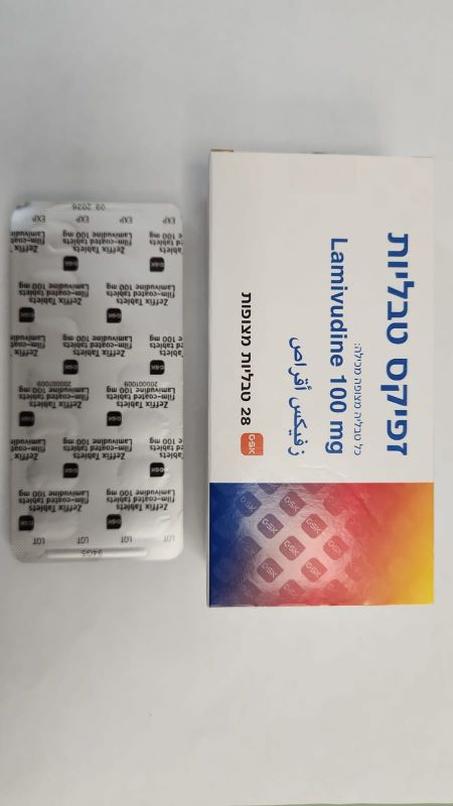Quest for the right Drug

זפיקס טבליות ZEFFIX TABLETS (LAMIVUDINE)
תרופה במרשם
תרופה בסל
נרקוטיקה
ציטוטוקסיקה
צורת מתן:
פומי : PER OS
צורת מינון:
טבליות מצופות פילם : FILM COATED TABLETS
עלון לרופא
מינוניםPosology התוויות
Indications תופעות לוואי
Adverse reactions התוויות נגד
Contraindications אינטראקציות
Interactions מינון יתר
Overdose הריון/הנקה
Pregnancy & Lactation אוכלוסיות מיוחדות
Special populations תכונות פרמקולוגיות
Pharmacological properties מידע רוקחי
Pharmaceutical particulars אזהרת שימוש
Special Warning עלון לרופא
Physicians Leaflet
Adverse reactions : תופעות לוואי
6 ADVERSE REACTIONS The following adverse reactions are discussed in other sections of the labeling: • Exacerbations of hepatitis B after discontinuation of treatment [see Warnings and Precautions (5.1)]. • Risk of emergence of resistant HIV-1 infection [see Warnings and Precautions (5.2)]. • Risk of emergence of resistant HBV infection [see Warnings and Precautions (5.3)]. • Lactic acidosis and severe hepatomegaly with steatosis [see Warnings and Precautions (5.4)]. 6.1 Clinical Trials Experience Because clinical trials are conducted under widely varying conditions, adverse reaction rates observed in the clinical trials of a drug cannot be directly compared with rates in the clinical trials of another drug and may not reflect the rates observed in clinical practice. Clinical Trials Experience in Adult Subjects with Chronic HBV Infection Clinical adverse reactions (regardless of investigator’s causality assessment) reported in greater than or equal to 10% of subjects who received Zeffix and reported at a rate greater than in subjects who received placebo are listed in Table 2. Table 2. Clinical Adverse Reactionsa Reported in Greater than or Equal to 10% of Subjects Who Received Zeffix for 52 to 68 Weeks and at an Incidence Greater than Placebo (Trials 1-3) Adverse Event ZEFFIX Placebo (n = 332) (n = 200) Ear, Nose, and Throat Ear, nose, and throat infections 25% 21% Sore throat 13% 8% Gastrointestinal Diarrhea 14% 12% a Includes adverse events regardless of severity and causality assessment. Specified laboratory abnormalities reported in subjects who received ZEFFIX and reported at a rate greater than in subjects who received placebo are listed in Table 3. Table 3. Frequencies of Specified Laboratory Abnormalities Reported during Treatment at a Greater Frequency in Subjects Treated with ZEFFIX than with Placebo (Trials 1-3)a Subjects with Abnormality/Subjects with Test Observations (Abnormal Level) ZEFFIX Placebo Serum Lipase 2.5 x ULNb 10% 7% Creatine Phosphokinase (CPK) 9% 5% 7 x baseline Platelets <50,000/mm3 4% 3% a Includes subjects treated for 52 to 68 weeks. b Includes observations during and after treatment in the 2 placebo-controlled trials that collected this information. ULN = Upper limit of normal. In subjects followed for up to 16 weeks after discontinuation of treatment, posttreatment ALT elevations were observed more frequently in subjects who had received ZEFFIX than in subjects who had received placebo. A comparison of ALT elevations between Weeks 52 and 68 in subjects who discontinued ZEFFIX at Week 52 and subjects in the same trials who received placebo throughout the treatment course is shown in Table 4. Table 4. Posttreatment ALT Elevations with No-Active-Treatment Follow-up (Trials 1 and 3) Subjects with ALT Elevation/ Subjects with Observationsa Abnormal Value Zeffixb Placebob ALT 2 x baseline value 27% 19% ALT 3 x baseline value c 21% 8% ALT 2 x baseline value and absolute ALT 15% 7% >500 IU/L ALT 2 x baseline value; and bilirubin >2 x 0.7% 0.9% ULN and 2 x baseline value a Each subject may be represented in one or more category. b During treatment phase. c Comparable to a Grade 3 toxicity in accordance with modified WHO criteria. ULN = Upper limit of normal. Clinical Trials Experience in Pediatric Subjects with Chronic HBV Infection Most commonly observed adverse reactions in the pediatric trials were similar to those in adult trials. Posttreatment transaminase elevations were observed in some subjects followed after cessation of ZEFFIX. 6.2 Postmarketing Experience The following adverse reactions have been identified during post-approval use of ZEFFIX. Because these reactions are reported voluntarily from a population of unknown size, it is not always possible to reliably estimate their frequency or establish a causal relationship to drug exposure. These reactions have been chosen for inclusion due to a combination of their seriousness, frequency of reporting, or potential causal connection to lamivudine. Blood and Lymphatic Anemia (including pure red cell aplasia and severe anemias progressing on therapy), lymphadenopathy, splenomegaly, thrombocytopenia. Digestive Stomatitis. Endocrine and Metabolic Hyperglycemia. General Weakness. Hepatic and Pancreatic Lactic acidosis and steatosis [see Warnings and Precautions (5.4)], posttreatment exacerbations of hepatitis [see Warnings and Precautions (5.1)], pancreatitis. Hypersensitivity Anaphylaxis, urticaria. Musculoskeletal Cramps, rhabdomyolysis. Nervous Paresthesia, peripheral neuropathy. Respiratory Abnormal breath sounds/wheezing. Skin Alopecia, pruritus, rash. Reporting of suspected adverse reactions Reporting suspected adverse reactions after authorisation of the medicinal product is important. It allows continued monitoring of the benefit/risk balance of the medicinal product. Any suspected adverse events should be reported to the Ministry of Health according to the National Regulation by using an online form https://sideeffects.health.gov.il Additionally, you should also report to GSK Israel (il.safety@gsk.com).

שימוש לפי פנקס קופ''ח כללית 1994
לא צוין
תאריך הכללה מקורי בסל
01/01/2000
הגבלות
תרופה מוגבלת לרישום ע'י רופא מומחה או הגבלה אחרת
מידע נוסף
